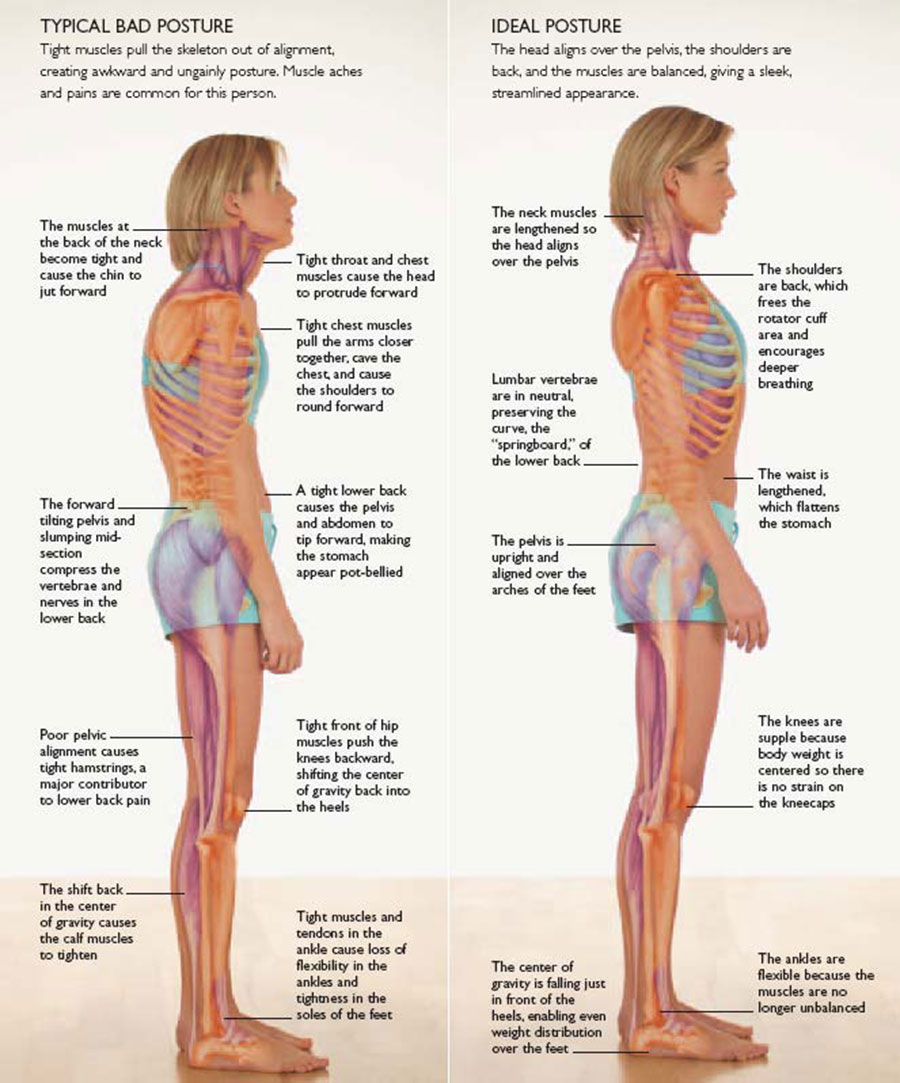From Head to Toe
Personal training and group fitness instructing differ on a few different levels. The most obvious is the personality and energy you bring to one client versus a group of people all at once. Regardless of the amount of people you train at once, you should always be energetic, encouraging, and enthusiastic in helping your clients reach their goals. The tough part of training a group all at once is that you can’t always make it around to correct the smaller details of the movements. At the end of each workout I always try to give a tip so that way when clients come back they have at least one thing to improve upon for their next workout. Especially with group fitness, instructors often spew lots of information and clients don’t always know what applies. My hope is that the one extra piece of information I can break down helps to make sense of the movements they performed in the workout.
Lately head position has been a big discussion for me. The set-up of every exercise is important. Often times it isn’t the way we perform the movement itself but the way we set up for it that can dictate the success or difficulty of the movement. I encourage clients to begin at the head and work their way down. This not only ensures you don’t miss any body parts, but our head position, when corrected, can usually fix and adjust the other issues below.
Things I often see include:
- looking at yourself in the mirror when in a bent over position
- leading with your head for a push up
- shooting your head forward when standing to use resistance bands
- dropping your head in between your hands during a plank
- staring upwards as you do a back extension
Form usually breaks down when the exercise becomes difficult to continue to perform. But, in other cases, people sometimes aren’t aware they are doing it or realize that the way they compensate for the movement might hurt their bodies and make the exercise more difficult to perform.
So what is the ideal position?
Ideally, we want our head to remain neutral with the rest of the spine and body. When we cue for proper alignment, trainers say to keep your shoulders, ribs, and hips stacked, implying that they all fall below the head, parallel to each other. I know that the ideal position is not always what happens in real life, but in order to protect our spine and joints, we want to practice neutral.

What can happen if we don’t focus on head position?
All of the above scenarios will ultimately affect the rest of the body below the head and neck. Poor head position can enhance rounding of the spine and a sore neck and lack of mobility through the shoulders and scapula. When our head or other body parts compensate, it can, in some instances, mean that the right muscles don’t get the work because the wrong ones are moving instead.
How to correct it?
Every person performing every movement will be different but a few key things to think about include:
- head, shoulders, ribs, hips stacked like building blocks
- paying attention to where your gaze is, for example on a deadlift we want the head and gaze to move up and down with us, but for a pushup we want the gaze above the hands slightly to avoid leading the nose too deep in between the hands
- checking in before you begin the movement to ensure proper set up position
- breathing properly to avoid carrying tension in the wrong body parts
- engaging your core to give your body a strong base of support in hopes the head and other body parts won’t want to overcompensate in a movement
- ask questions to your trainer or fitness instructor!
I hope this week’s tip on head position will be something you can bring with you to your next workout too!
Be fierce. Be strong. Be vibrant.
Rachel
Check out Rachel's page on Facebook or follow her on Twitter and Instagram.
Feel free to comment below with topics you would be interested in reading about in the future.
